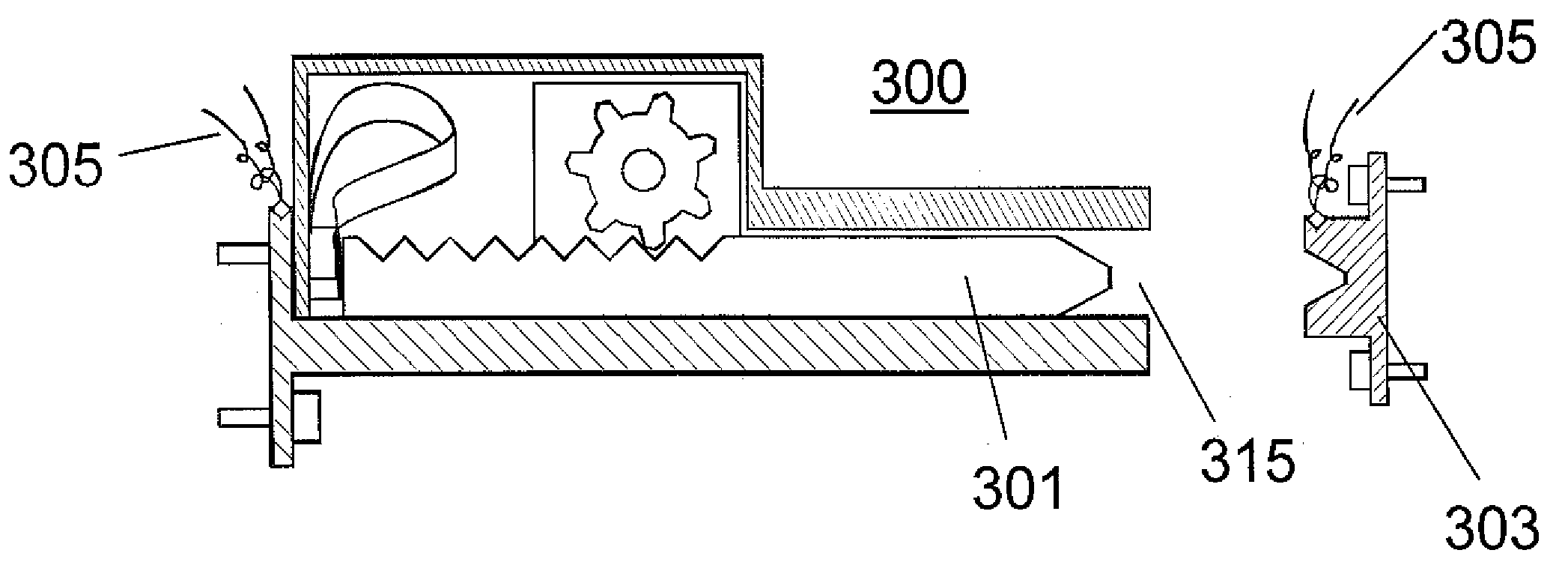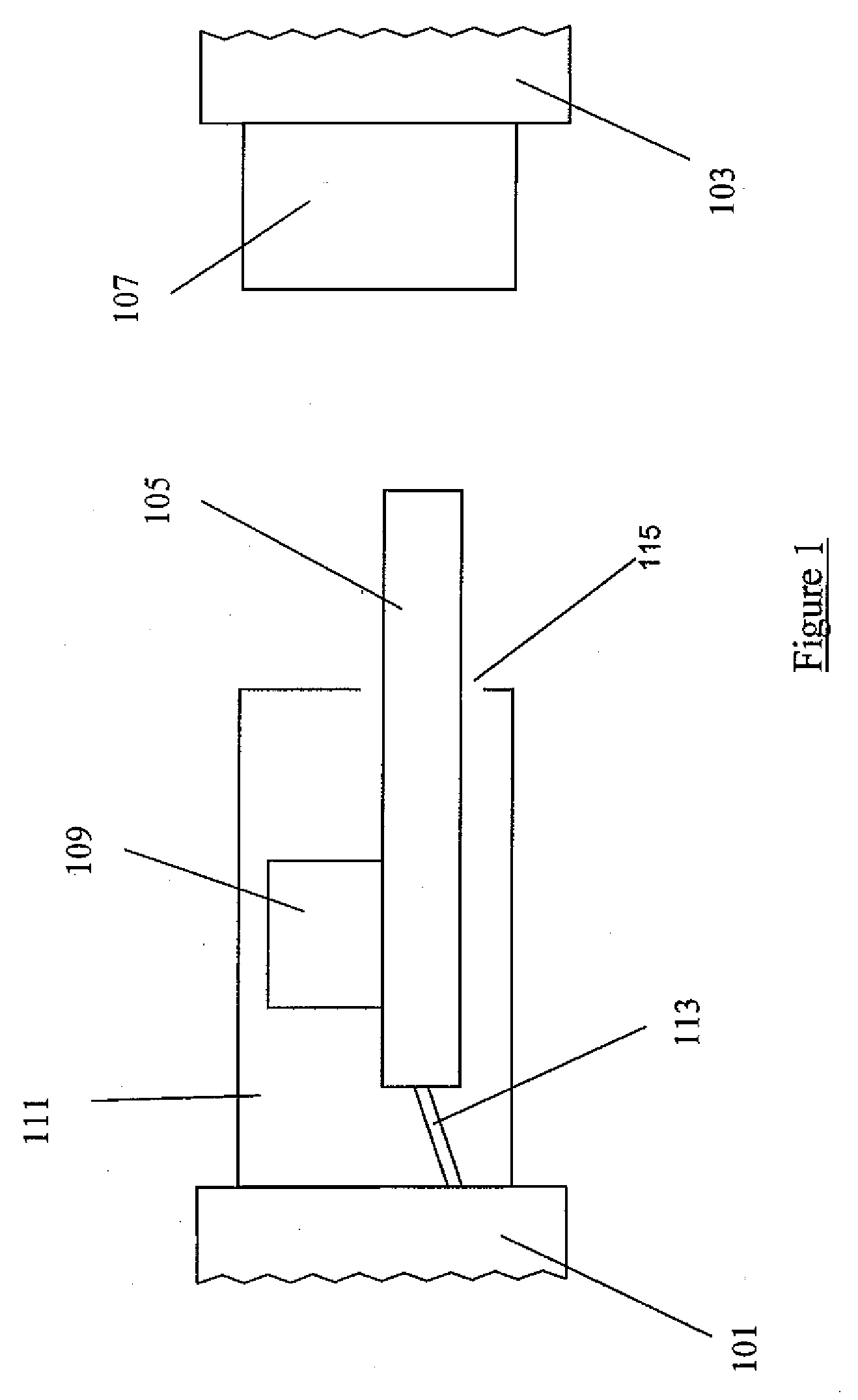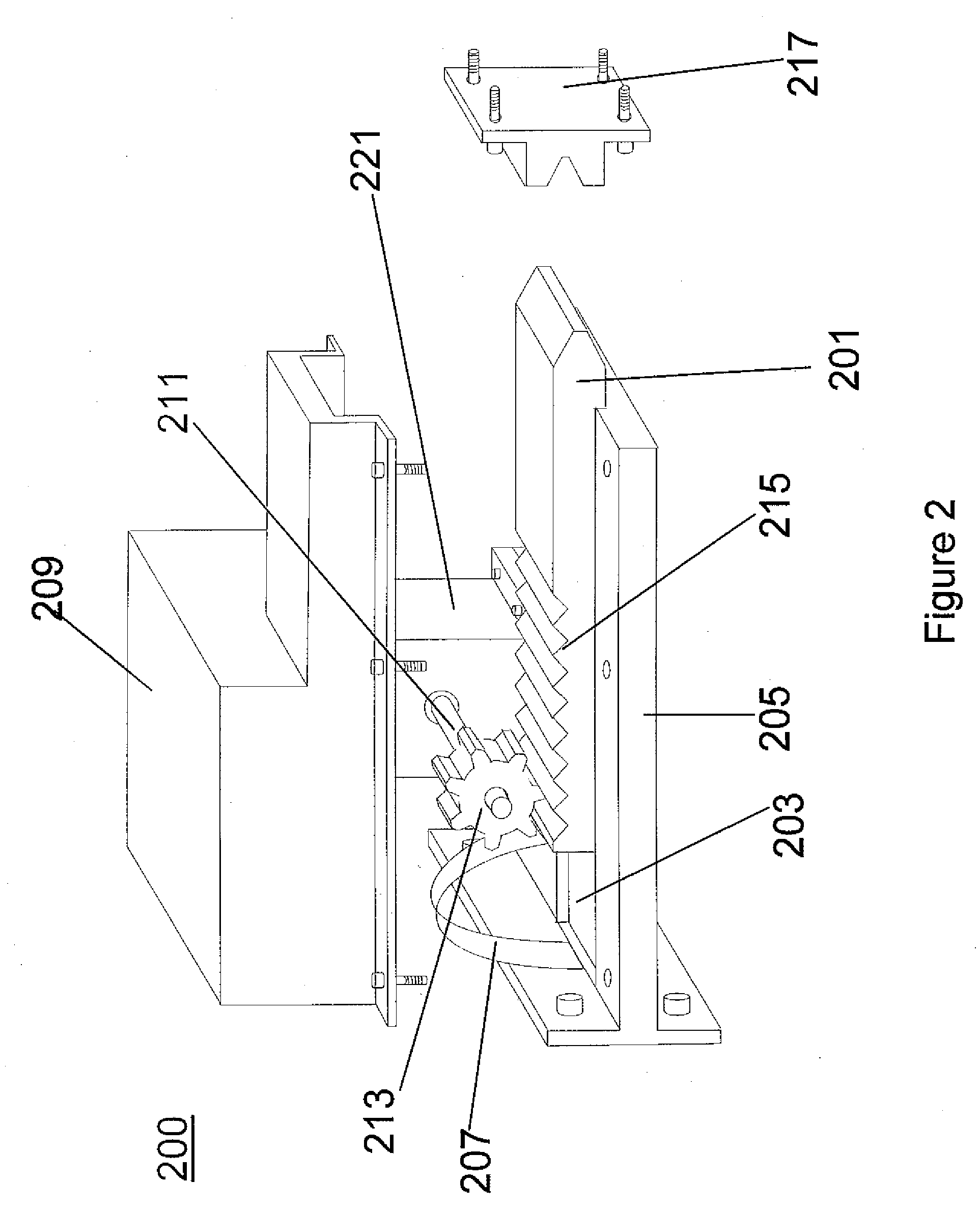Mechanically actuated thermal switch
a mechanical actuator and thermal switch technology, applied in the field of thermal switches, can solve the problems of not being able to initiate thermal transfer on command or be tuned to control the thermal transfer rate, switches will not work in an environment or system, and types of thermal switching means will not work, so as to achieve the effect of controlling the radiative thermal transfer ra
- Summary
- Abstract
- Description
- Claims
- Application Information
AI Technical Summary
Benefits of technology
Problems solved by technology
Method used
Image
Examples
Embodiment Construction
[0028]In the following detailed description, reference is made to the accompanying drawings which form a part hereof and in which is shown, by way of illustration, embodiments of the disclosure. It is to be understood that other embodiments may be utilized and structural or logical changes may be made without departing from the scope of the disclosure. Therefore, the following detailed description is not to be taken in a limiting sense, and the scope of embodiments in accordance with the disclosure is defined by the appended claims and their equivalents.
[0029]Various operations may be described as multiple discrete operations in turn, in a manner that may be helpful in understanding various embodiments; however, the order of description should not be construed to imply that these operations are order dependent.
[0030]The description may use perspective-based descriptions such as up / down, back / front, and top / bottom. Such descriptions are merely used to facilitate the discussion and ar...
PUM
 Login to View More
Login to View More Abstract
Description
Claims
Application Information
 Login to View More
Login to View More - R&D
- Intellectual Property
- Life Sciences
- Materials
- Tech Scout
- Unparalleled Data Quality
- Higher Quality Content
- 60% Fewer Hallucinations
Browse by: Latest US Patents, China's latest patents, Technical Efficacy Thesaurus, Application Domain, Technology Topic, Popular Technical Reports.
© 2025 PatSnap. All rights reserved.Legal|Privacy policy|Modern Slavery Act Transparency Statement|Sitemap|About US| Contact US: help@patsnap.com



